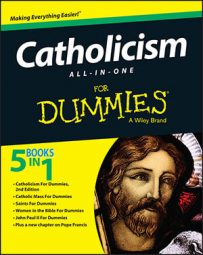Known before his conversion to Christianity as Saul of Tarsus, Paul is probably the most mentioned in all of the New Testament Scriptures — 14 of the 27 books of the New Testament are ascribed to his name. While he wrote no Gospel, he did write pastoral letters to early Christian communities with a message that transcends time and space and which the Catholic Church considers divinely inspired.
Tarsus (first century a.d.–a.d. 65)
Patron: preachers, writers, tent makers
Feast day: January 25 (Conversion of St. Paul)
He was born in Tarsus and was thus a Roman citizen. A member of the Pharisees, Saul was a militant persecutor of the new-found sect of Christianity. He saw Christians as disloyal to their Hebrew religion and considered Christianity a perversion, not a valid expression of Judaism. He was present at the stoning of St. Stephen, the first Christian martyr and deacon of the Church (Acts 7:58).
Saul's outlook irrevocably changed while he was on the way to Damascus to round up Christians (men, women, and children). He was knocked to the ground and heard the voice of Jesus say, "Saul, Saul, why do you persecute me?" (Acts 9:4). He realized that he was persecuting Jesus by persecuting his followers. Christ had already died, risen, and ascended when Saul had this encounter. From that moment onward, he was known as Paul. Temporarily blinded after hearing the voice, Paul fully recovered his sight when Ananais laid hands on him and baptized him (Acts 9:18).
After his conversion, Paul went on three missionary journeys. On the first journey, he wrote his Epistle to the Galatians. On his second journey, he wrote his Epistles 1 and 2 Thessalonians. On his third journey, he wrote his Epistles 1 and 2 Corinthians and Romans.
Paul had to use his Roman citizenship to escape the death penalty in Jerusalem by his former colleagues, the Pharisees and Sadducees. During his imprisonment he wrote letters (epistles) to Christian communities, encouraging whenever possible but also chastising when necessary. These epistles include Colossians, Ephesians, Philemon, Philippians, 1 Timothy, Titus, and 2 Timothy. His whole journey on foot and at sea is seen as a living symbol of the spiritual journey every Christian must make to get from this world to the next.
Because of his Roman citizenship, he couldn't be crucified and could only be executed by the sword (beheading); he also appealed his case to Emperor Nero. This assured him safe passage to Rome, and at imperial expense. He was shipwrecked for a while in Malta, but eventually was sent on to Rome, where he was martyred in the same place as St. Peter before him.
Today, a magnificent basilica marks the spot of Paul's martyrdom, known as St. Paul Outside the Walls because it's literally located outside the Aurelian Walls of the city of Rome.

